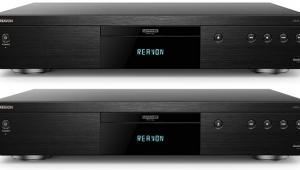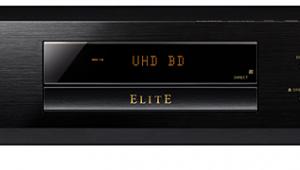Samsung UBD-K8500 Ultra HD Blu-ray Player Review High Dynamic Range: The Abridged Primer
High dynamic range, or HDR, is simply a way of more closely replicating the variations in luminance we see in real life. A typical LED-driven LCD HDTV might produce a maximum output of about 400 nits (117 foot-lamberts). Today’s brightest HDR-capable consumer sets can at least double that.
However, HDR isn’t just about a brighter picture; if it were, we could simply set our HDTVs to stun (Vivid mode!) and be done with it. HDR offers improved luminance gradations not only in the peak and near whites, but in the dark, shadowy parts of the picture as well.
Dolby was the first to bring HDR to our attention with Dolby Vision. But now there’s also HDR10. Dolby Vision is currently offered in a few HDR movie streams (mainly from Netflix and Vudu), but HDR10 is the format of choice on all of the first HDR-enhanced Ultra HD Blu-rays on the market.
Dolby Vision is also a minority player so far in UHD TVs, where it’s not yet supported by either Samsung or Sony, companies that strictly support HDR10. Ideally, you’ll want both for future-proofing, and more such dual-format sets will hit the market this year, including some of LG’s new OLEDs. But support for both formats will not be universal in 2016.
Meanwhile, a set that meets the specs (and carries the logo) of Ultra HD Premium, as stipulated by the UHD Alliance, must be capable of 1,000 nits of peak brightness and 0.05 nit at black, or 540 nits peak brightness and 0.0005 nit black. The latter range is a nod to OLED, which, for all practical purposes, can do total black but won’t go as bright as an LCD. LCDs, on the other hand, can’t go nearly as dark as OLEDs, though LCDs with full-array local- dimming backlights can do black quite well. Indeed, unless an LCD set does local dimming of some kind, it isn’t likely to be very effective with HDR material, even if it claims the ability to display that format.
To recap: HDR isn’t just about a brighter picture. Rather, it’s how the brightness range tracks from the deepest blacks to the brightest whites. With HDR on a properly set display, normal material looks normal, but both near-black details and bright highlights are enhanced. That’s why I was able to watch HDR in a fully darkened room without burning my retinas (though I did dial down the video controls to slightly below the factory settings on some material).—TJN





























































